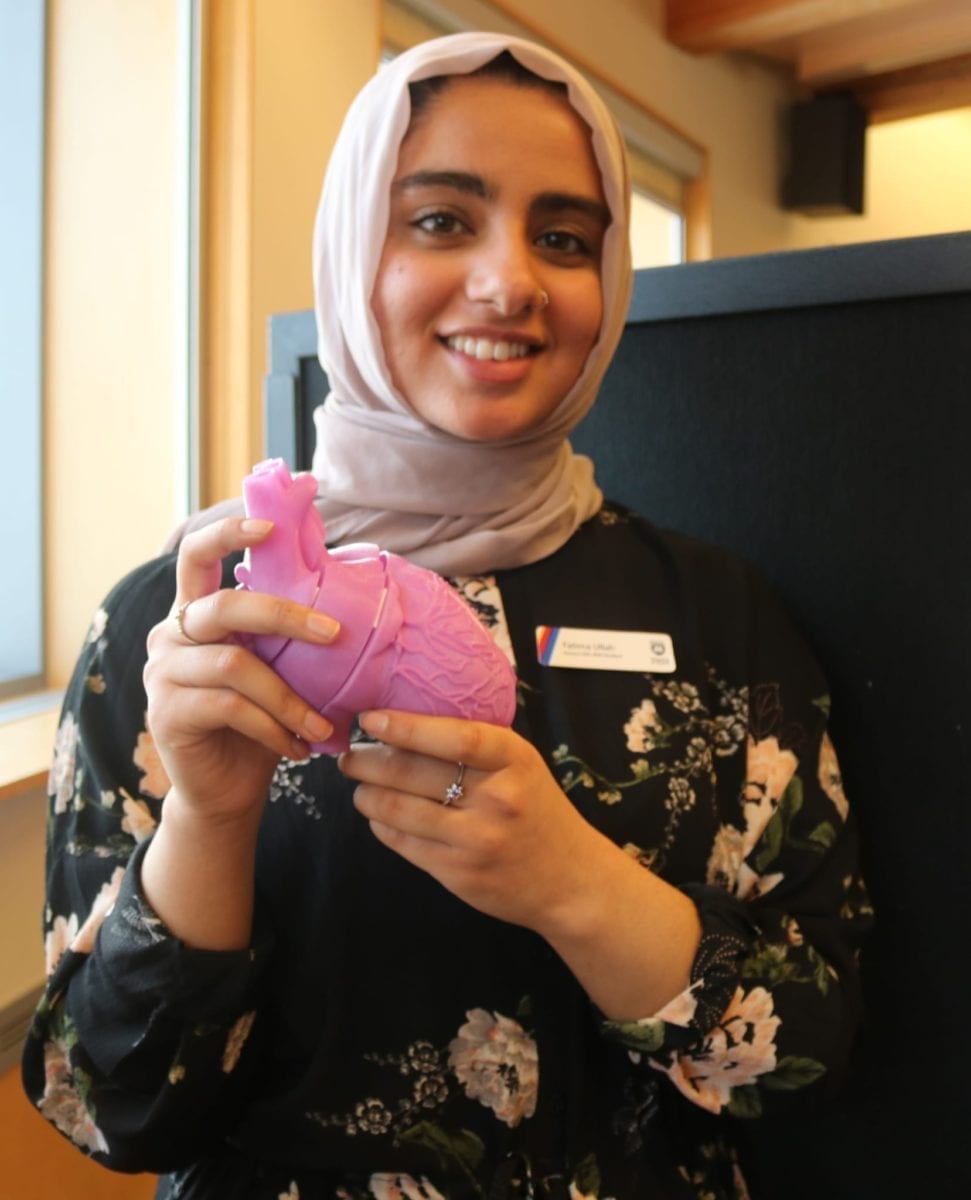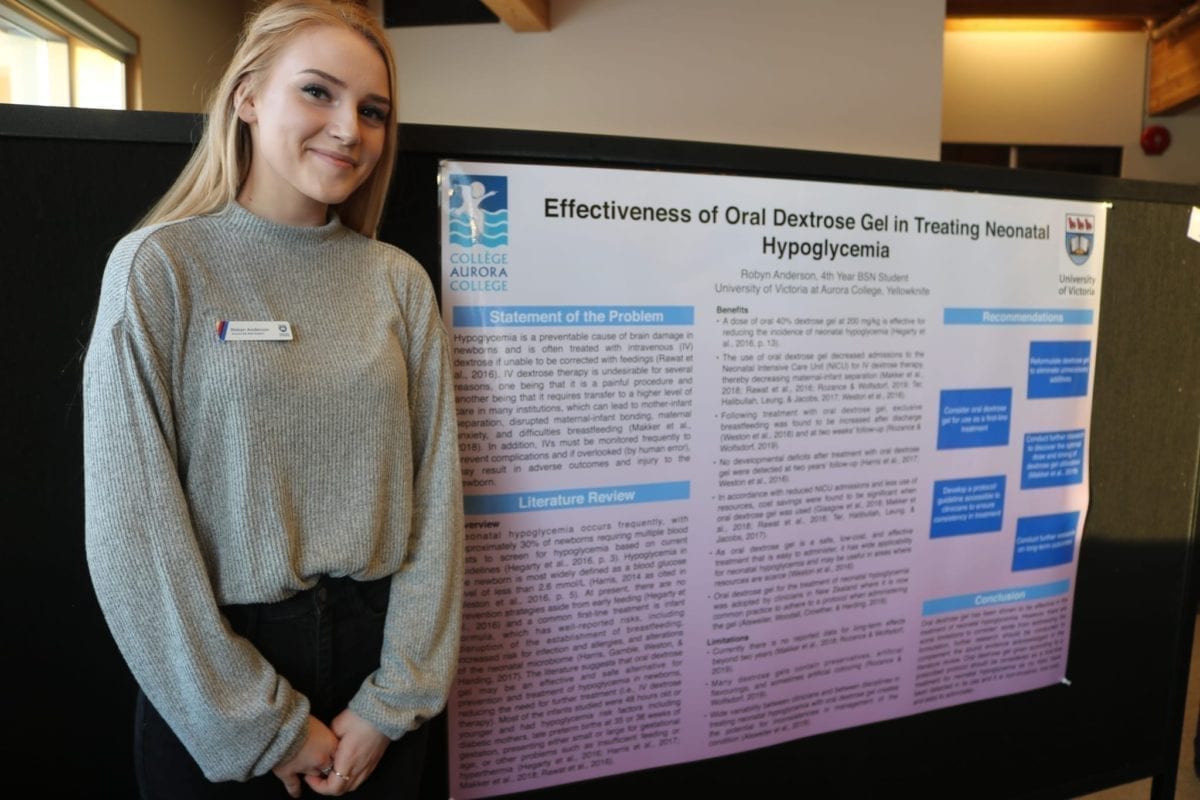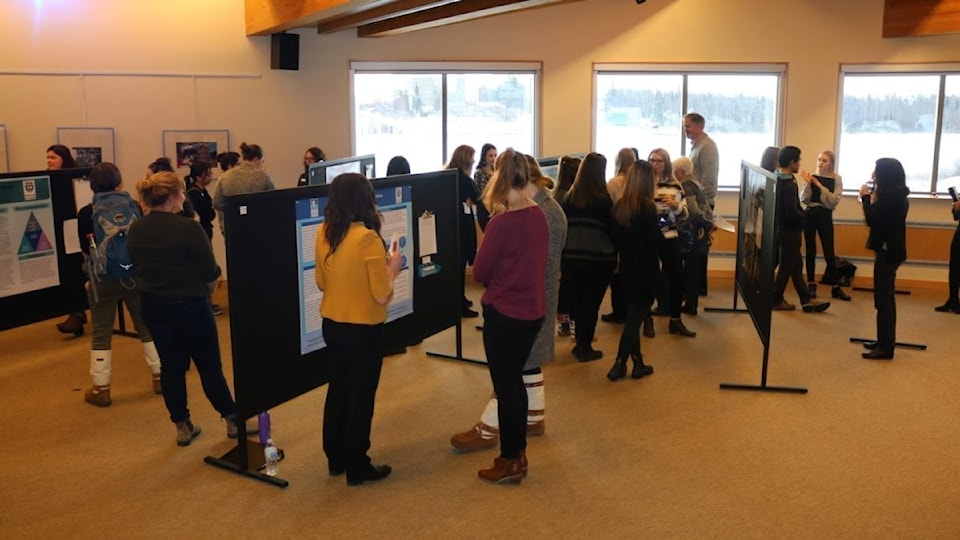Aurora College nursing students celebrated and shared their knowledge at the annual Research Day held at Prince of Wales Northern Heritage Centre, Dec. 4.

Simon Whitehouse/NNSL photo
Twenty-two fourth year students set to graduate the Bachelor of Science Nursing Programs greeted visitors with literature review research posters discussing topics ranging from hyperbaric oxygen therapy and wound healing to substance use and abuse among youth in the Northwest Territories.
Dr. Jessica Dunkin opened the event with her presentation, "From the Archives to the Bookstore: Researching and Writing Canoe and Canvas."
Dr. Pertice Moffitt, a manager/instructor of health research programs at the Aurora Research Institute/Aurora College said senior students put on the fair every year in Room 307 and 308 on the third floor of the Yellowknife campus but the space is now small to host it there.
This is the first year the heritage centre has been the host location.
"This is the product and culmination of their years in the program, really," Moffitt said. "We put it on every year, but we have outgrown our college location. Our campus is not big enough."
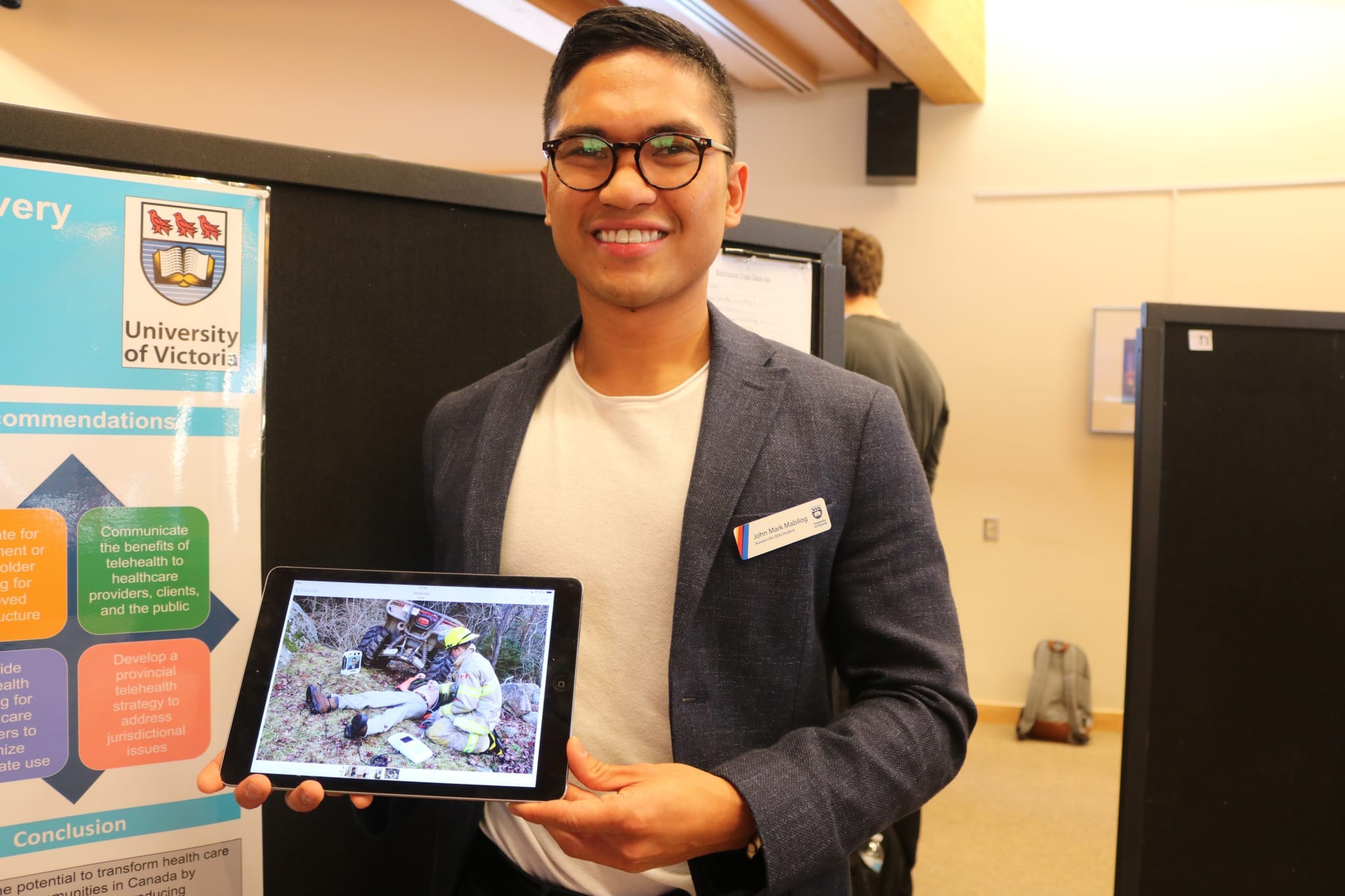
Simon Whitehouse/NNSL photo
Students, for the most part, were enthusiastic about sharing what they learned and hopeful the topics could be applied to Northern health care delivery.
John Mark Mabilog had a presentation called "Determining the Impact of Telehealth on Healthcare Delivery in Remote Communities," a topic he said was especially relevant to distant NWT communities.
Telehealth is when health care or medical services are delivered through technology when a practitioner is far from a patient, Mabilog explained.
Ensuring that telehealth services are dependable and serviceable to many northern communities, including those with Indigenous people that may be short staffed and lacking in broadband Internet is an ongoing concern, he said.
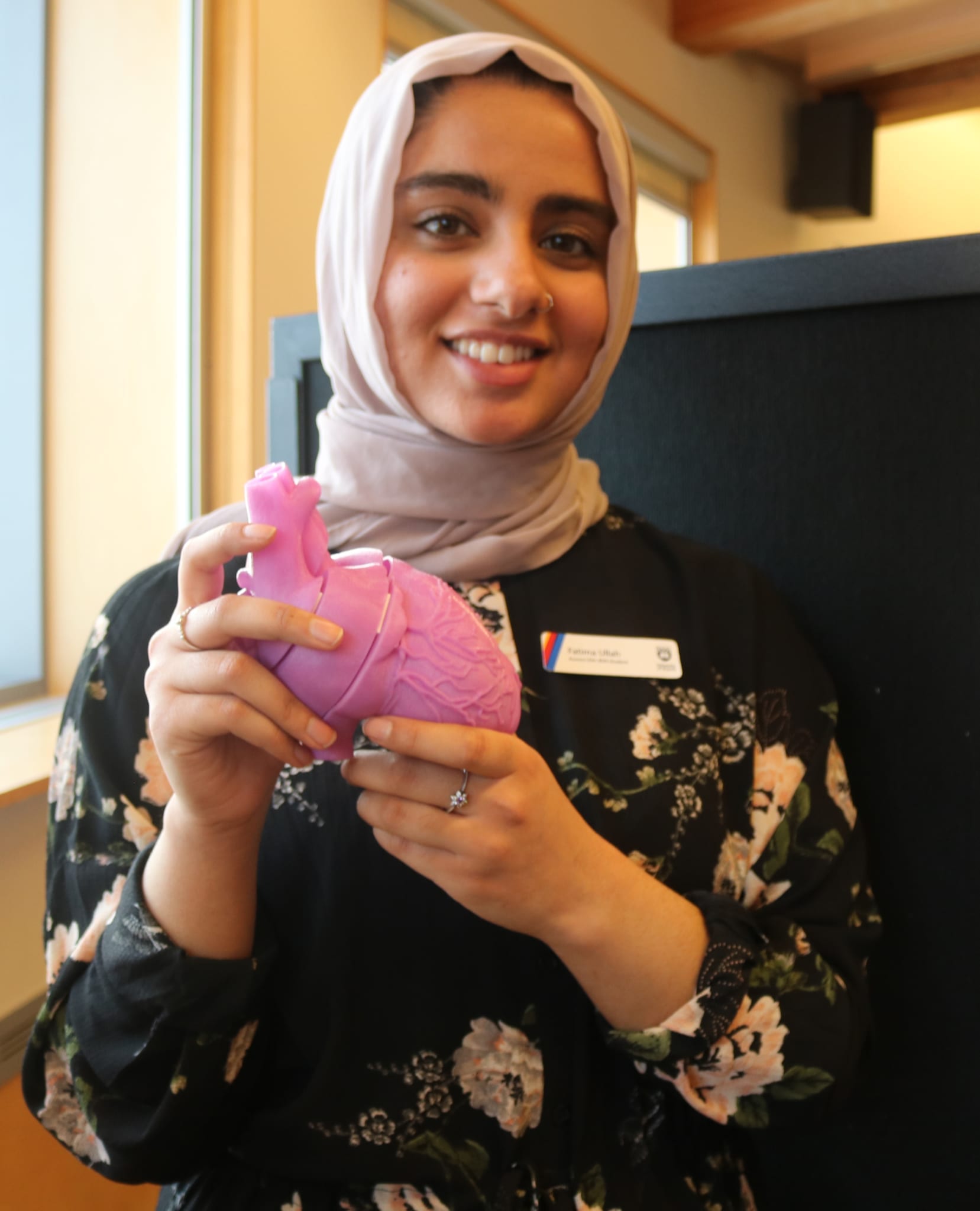
Simon Whitehouse/NNSL photo
"I find it very relevant here in the North and in Canada," he said, noting that telehealth has existed in the North for about 30 years.
"It is still evolving. There are a lot of benefits and one is that it improves access to health benefits. People can stay in their communities and it eliminates the stress, going to cities and leaving their families. "
Other students drew from their personal experiences. Fatima Ullah said she noticed her Grade 6 brother Faseeh was using 3D printing in his education to make models. She wanted to see how the technology has been understood to be useful in health care delivery.
"I wanted to look at the benefits and limitations of using this cool technology in health care and how it can be applied in health outcomes," she said. "What I found is that it is used quite widely in pre-operative planning."
In cases of cancer, for example, she said doctors use it to locate and see how to properly remove cancer tumours while limiting damage. This is done by taking an MRI image of a liver and using a 3D printer to replicate a patient's liver.
She said she unfortunately found the technology is in its infancy as it often takes up to 15 hours to print and numerous days to get all of the parts to ensure the replication is put together accurately.
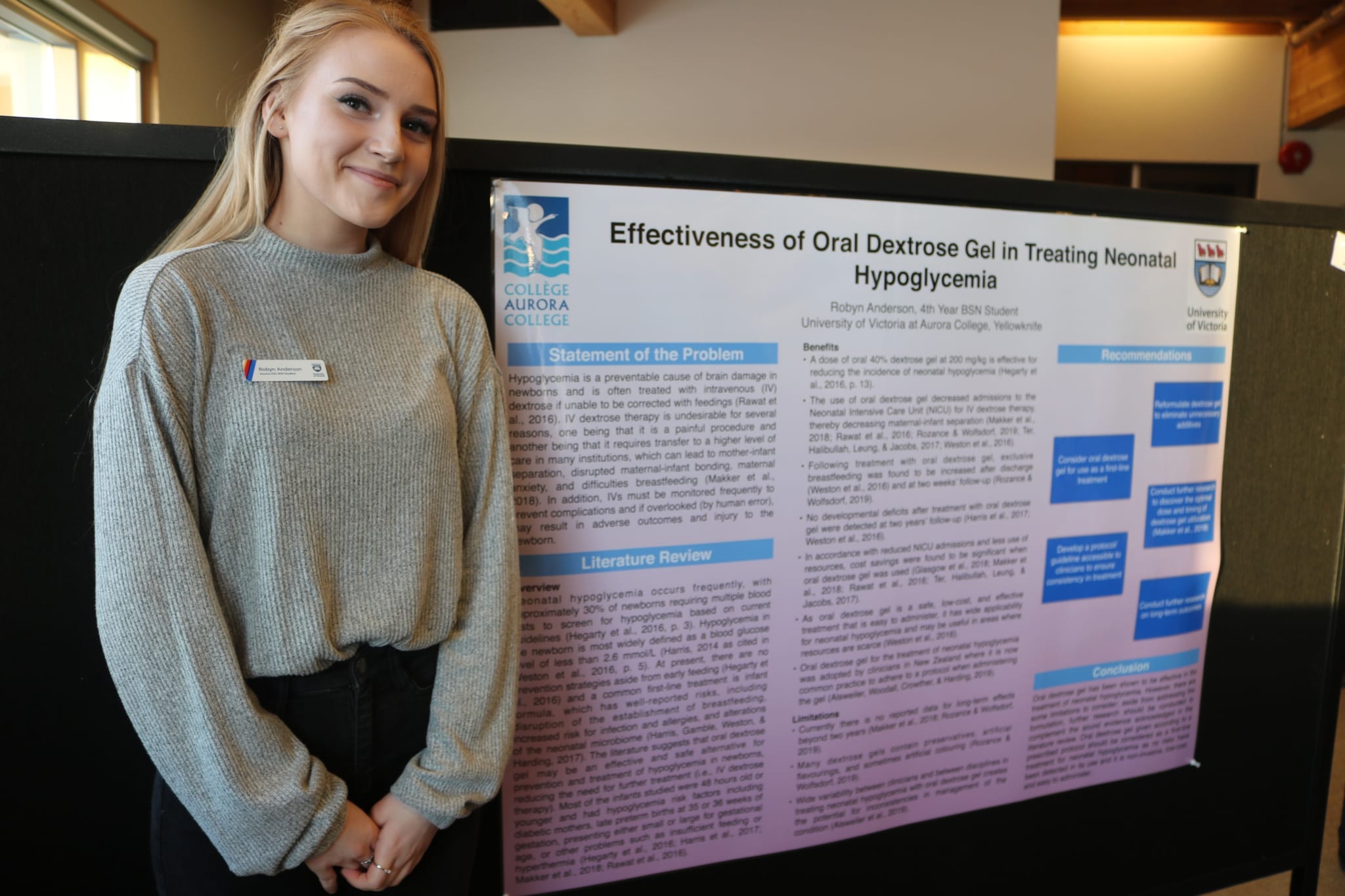
Simon Whitehouse/NNSL photo
Robyn Anderson talked about the Effectiveness of Oral Dextrose Gel in Treating Neonatal Hypoglycemia. She has worked with the obstetrics unit at Stanton Territorial Hospital during her nursing student career and said one of the big concerns on the unit has been noticing signs of hypoglycemia. Practitioners look for jitteriness or blue tints to the skin as symptoms that would lead to blood glucose checks.
"I wanted to see if there was a treatment that would avoid (IV dextrose therapy)," she said.
"From the literature I found a dose of 200 milligrams per kilogram of 40 per cent dextrose gel is effective in treating (hypoglycemia) and can be helpful as a prophylactic measure when the newborn has hypoglycemia risk factors."
Among those risk factors could be being born to a diabetic mother or being small or large for gestational age or is having difficulty feeding or has hypothermia.
The event was to end late Wednesday afternoon with a keynote address by Dr. Prez Oyugi, several oral presentations and a people's choice award ceremony.
